Why ‘pointless’ hobbies like Lego and model railways can help prevent dementia
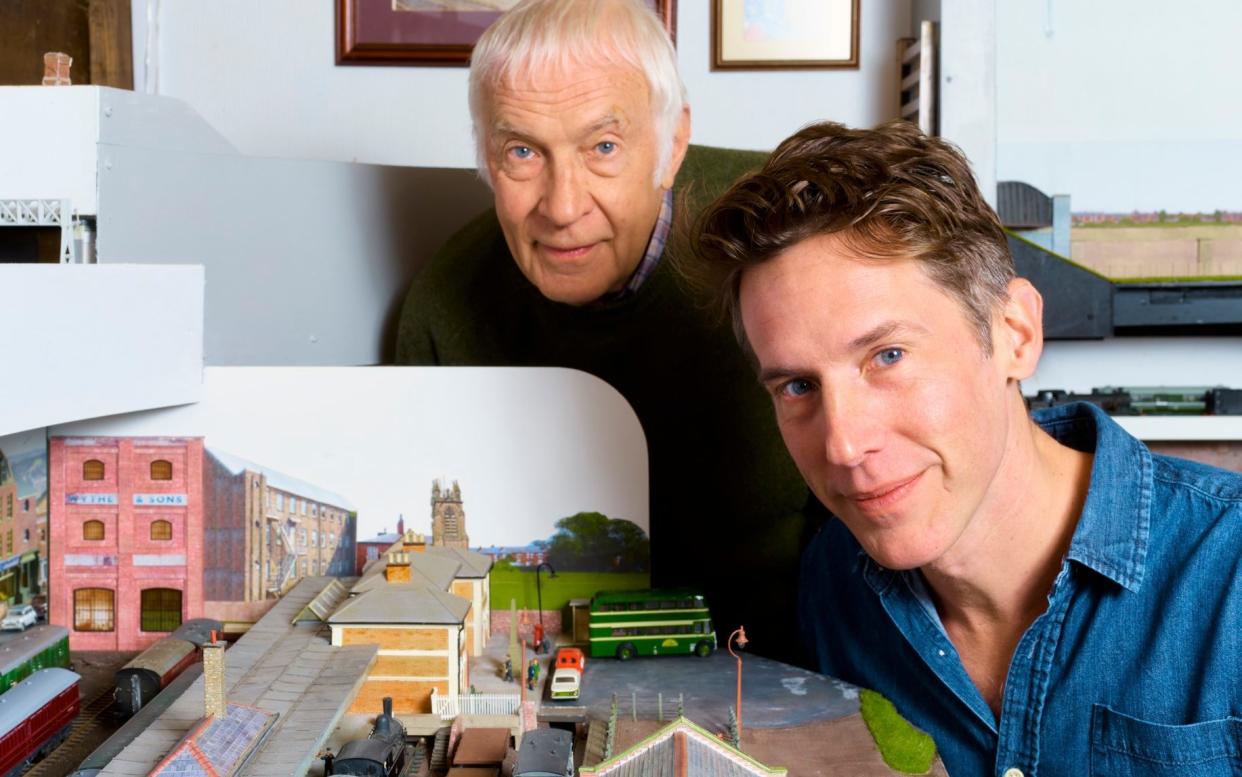
- Oops!Something went wrong.Please try again later.
Every Wednesday evening, for as long as I can remember, my dad has driven off to something that he calls ‘Railway Club’. Neither I, nor any other member of my family, has ever been granted access to this sanctum.
So for all we know, it could be a cover for bigamy or a meth lab. But my dad insists that it is really just a handful of men making miniature locos, cups of tea, and knowing comments about the number of rivets you’d find cabside on an LMS 4-6-0. ‘It keeps him out of trouble,’ says my mum.
The hobby is not just confined to Wednesday evenings, either. My dad has an extensive 00-gauge layout in his shed; two layouts, actually, overlapping recreations of east London railway stations in the late-1950s of his boyhood, just prior to the Beeching report, aka the railway romantic’s 9/11.
(One station is called ‘Bow Locks’, as in, ‘Bow Locks to the City,’ a schoolboy joke that took me a while too.) He has also used his retirement to invest in a grand projet, a miniature steam railway in Hertfordshire where he has a share in a locomotive that can pull along a couple of truckloads of grandchildren.
I found all this mortifying when I was a teenager – ‘Your dad still plays with trains?’ – but see it as rather sweet now that he is in his 70s.
Only, on a recent visit to the ride-on layout, I scented a note of melancholy amid the coal smoke. Who, I wondered, will keep this thing going in 10 or 20 years’ time? There have been doomy reports about the death of model railways as a hobby, with clubs often citing a lack of new members. The annual Warley National Model Railway Exhibition has been a fixture at the Birmingham NEC for decades – but the organisers this month declared that they are suspending it ‘for the foreseeable future’, citing ‘an ageing membership’.
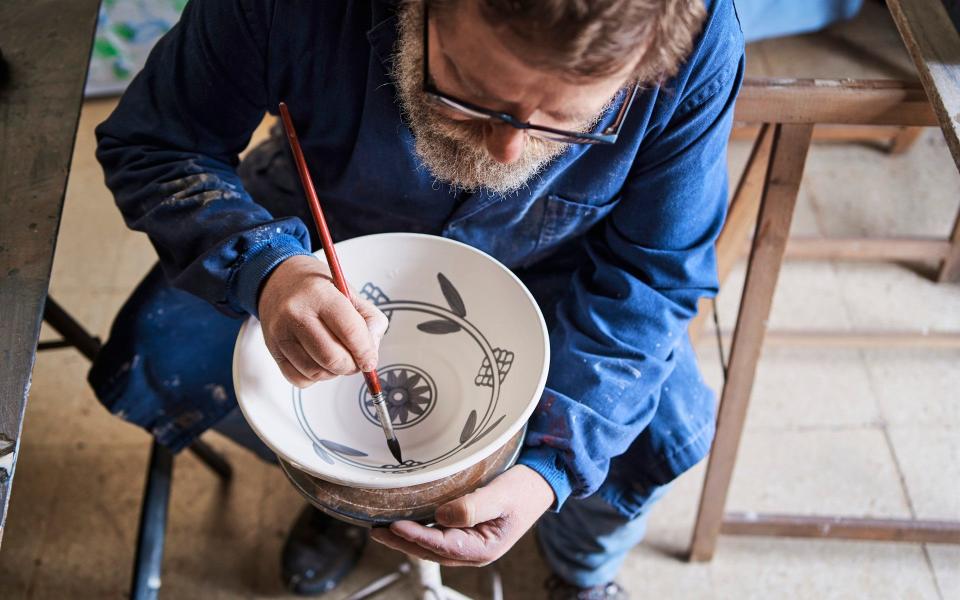
And it’s not simply that I don’t know anyone my age who is into trains. I barely know anyone my age who has time – or space! – for a hobby at all. A doctor friend recently spent a day bladesmithing at an urban forge, but this was a present from her husband, who felt she needed to do something besides work and childcare.
As a dutiful millennial, I have a side hustle, having monetised an interest in cocktails by writing a Substack newsletter, and if I have a spare evening, this is what I’ll often do. But it means I have contrived to turn a hobby into work.
There’s plenty of stuff I enjoy doing – playing various instruments, learning languages, cooking, drawing, Scrabble, chess, cinema, ceramics, making the kids’ Lego models – but the idea of devoting head space and house space to activities with no prospect of return on investment feels weirdly decadent.
This loss of ‘free-flowing enjoyment’ is to a large extent generational, says Nick Srnicek, co-author (with his similarly overworked partner, Helen Hester) of the excellent book After Work, which examines the erosion of free time.
‘For parents, free time has actually gone down quite significantly,’ he says. ‘It’s particularly an affliction of the professional managerial classes – but it also gets into hustle culture. Like: are you spending your free time just sitting around doing nothing? Aren’t you trying to learn the next productivity hack?’
Most British workers saw an increase in leisure time over the 20th century, and with this came a grand mid-century flourishing of railway modelling, pigeon fancying, dressmaking, amateur dramatics, coin collecting, macramé and so on. In the 1970s, working-age men and women in the UK enjoyed about six hours of leisure per day. Today, according to time-use research, men have five hours and 23 minutes while women have four hours and 47 minutes.
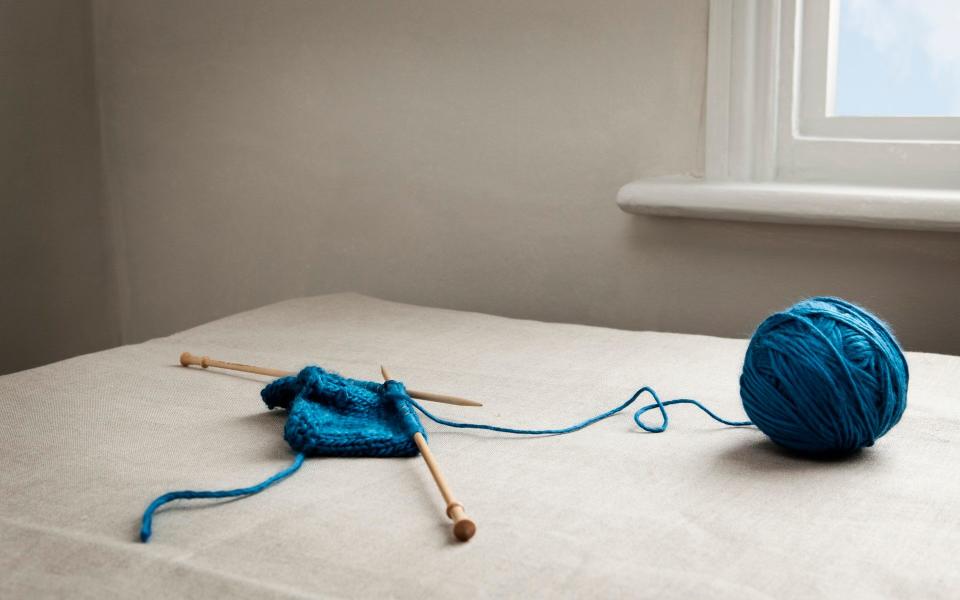
The problem is particularly acute for working parents – and you will note that it is women who have lost the most free time. According to the most recent UK statistics, those living with a child younger than 15 lose out on about two hours of leisure time per day, compared with those living on their own.
But there are additional pressures that are not captured in the raw data, says Srnicek. ‘It’s not like we’ve lost a huge amount of free time over the last 30 years, but one thing that is really different now is the quality of the free time,’ he says. ‘There’s a lot of research asking people simply how busy they feel. And the subjective studies basically say that people feel much more pressured.’
He suggests three explanations for this. One is disjointed work schedules. The costs of modern living tend to demand dual incomes, but there is no guarantee that schedules will align, and for parents there is the problem of the school day finishing mid-afternoon.
We also have a strong societal pressure to be busy. And then there is the perfectionism associated with raising children; modern parents spend ever longer worrying about children and tending to their hobbies – which means less energy for their own interests.
‘When you do have free time, it’s much easier to just scroll your phone, watch some Netflix and passively receive leisure that’s poured into your eyes, basically, as opposed to a hobby, which is a much more active project that keeps you thoughtfully engaged and might even be creative,’ says Srnicek. Because naturally, our addictive, attention-hungry devices have filled the void.
It’s silly, really, because time spent on actual hobbies – free-flowing, mildly pointless hobbies – would clearly do us more good. There is ample research on the benefits of hobbies, defined by researchers as purposeful, regular, enjoyable activities pursued outside of work.
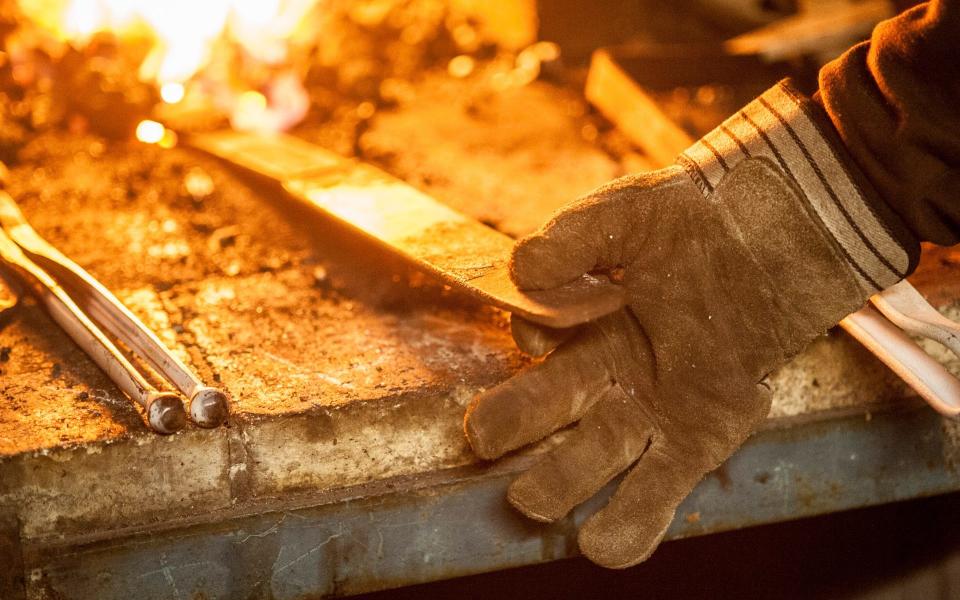
‘Having a hobby really does seem to improve our mental health,’ says Dr Karen Mak of University College London, who notes that countries where people engage the most in hobbies (according to her research into the over-65 age group, these include Sweden, Denmark and Switzerland) also rank high on the World Happiness index.
She recently completed a study that linked hobbies to fewer depressive symptoms, higher levels of happiness and improved life satisfaction among people aged 65 and over in 16 countries. ‘Even in countries that are not as happy or have lower life expectancy, we can still see the benefits of hobbies on mental health.’
Other studies have shown that hobbies can benefit cognitive function and social cohesion, and help prevent the development of coronary heart disease, dementia and chronic pain. Indeed, so beneficial are hobbies that GPs in certain local authorities can now direct patients towards them, part of a practise known as social prescribing in which a patient might be paired with a link worker who helps find them a suitable arts group, gardening project or sports team to join.
The encouraging news is that the UK is a fairly successful hobbying nation. Mak’s analysis drew on a study into ageing in England in which 78 per cent of participants, all aged 65 and above, reported having a hobby, which Mak rates as ‘pretty good’.
But she points to a bifurcation of hobbying. ‘We do have this large ageing retired population so in some ways, it’s kind of a golden age for hobbies because there’s lots of people with time on their hands,’ she says. Essentially, a generation that enjoyed more leisure time while at work now also have acres of leisure time in retirement.
Still, it’s not as if my generation does nothing besides looking at our screens and complaining about boomers. It’s more that our leisure activities seem to be far more tied up with the business of self-improvement (exercise, yoga, meditation), subsistence (can cooking be said to be a hobby?), and consumerism (there remains a sub-breed of hobbyist for whom the acquisition of kit is the prime motivator).
And as my mum frequently points out – she’s a keen amateur sewer by the way – hobbies are expensive. It costs vastly more to make a quilt or a jumper than it does to buy one, globalised mass production having put an end to the days of make-do-and-mend.
Moreover, hobbies that ought to be a refuge from the world of work are increasingly subject to precisely the sort of productivity demands that make work feel so fraught. If you cycle, you are probably aware that your friends cycle faster and further than you, thanks to apps such as Strava. If you are halfway decent at knitting, I’ll bet someone has tried to persuade you to sell your creations on Etsy or eBay. Whatever activity you do, you’ll likely find someone who does it better than you on social media.
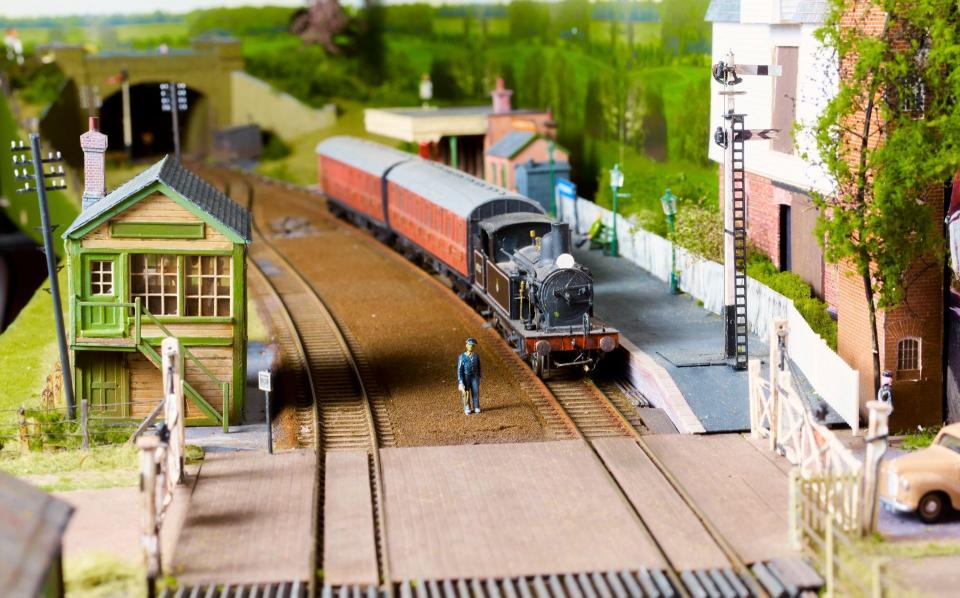
For psychologist Dr Audrey Tang, the problem is perfectionism. ‘I think because of social media, we feel we have to show that even our leisure time is done brilliantly,’ she says. ‘It’s the problem with being an adult. We suddenly think, if I’m not playing a masterpiece, I can’t be good at the piano. But if you are making music of any kind, you can still class that as a hobby.’
Social pressure can also make us self-conscious about our hobbies. In addition to being a psychologist, Tang teaches recreational burlesque dancing, which she describes as ‘low-level aerobics with a burlesque twist to build body confidence’. However, she admits, she often receives sceptical glances when she reveals this in company.
‘It’s like admitting you play Dungeons & Dragons. There are socially acceptable hobbies and non-socially acceptable hobbies.’ Really, she insists, it doesn’t matter what the hobby is – even watching Netflix is fine – as long as it gives you enjoyment.
‘I’m very much from the school of positive psychology, which says that there are three routes to happiness. One is healthy relationships. The second is being in a state of flow and enjoying what you’re doing. And the other is having a sense of meaning and purpose. And a hobby can take up
all three of those things.’ Even recreational burlesque? ‘Especially recreational burlesque.’
Tallie Maughan, founder of Turning Earth – which operates four pottery studios in London – has come to see hobbies as something quite necessary that we neglect at our peril. She has found that a lot of the people who come to her studios do so when they’re in crisis. ‘It’s not necessarily a culturally normal thing that people make time for in their day-to-day lives,’ she says. ‘It’s more like: “I’ve burned out. I’m in crisis. Now my hobby has to help my crisis!”’
It’s not hard to see why ceramics might be a perfect balm to, say, a frazzled tech worker (it was, incidentally, the former CEO of Monzo bank who first put me on to Turning Earth). Moulding a piece of clay on a wheel requires full concentration on one thing – it’s the antithesis of looking at a screen.
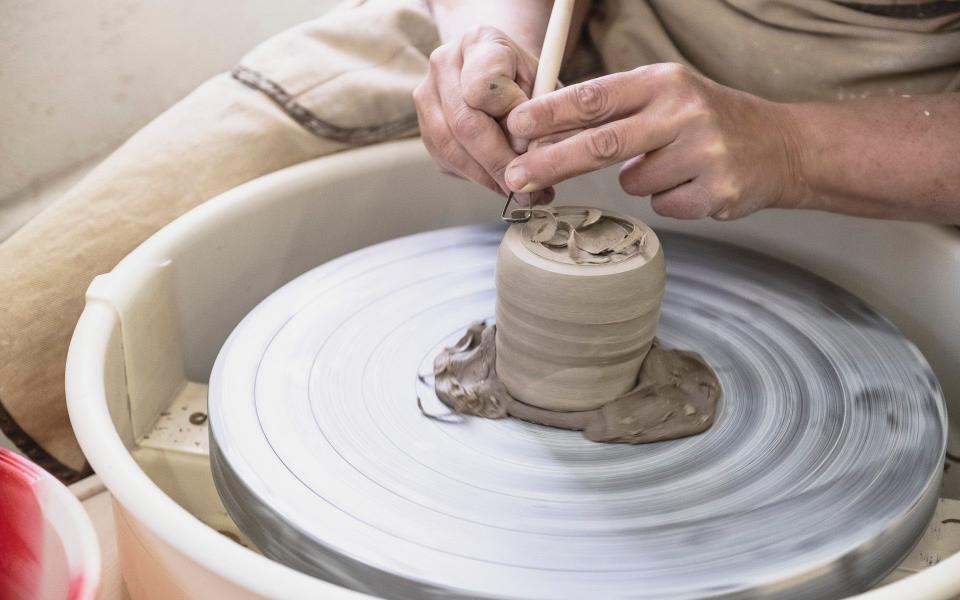
‘If you’re too much in the doing mode when you’re doing ceramics – if you’re trying to push it out and make something happen – it just doesn’t work very well,’ says Maughan. ‘It’s like gardening. You have to be receptive. You have to feel what the clay will do. I think the reason why ceramics is as helpful as it is, is that it doesn’t lend itself to a grand plan. It doesn’t respond to the quick fix.’
Maughan feels we are, as a culture, missing out if we don’t make time simply for being. This, she explains, was part of the reason she turned to ceramics in the first place. ‘I thought we were absolutely addicted to doing. It’s a cultural addiction we have. We’ve become human doings. A hobby is more about being and we don’t think it’s OK to just be. Children do a wide range of things: arts and crafts, PE. We need to put these things back into the adult curriculum.’
Still, I wonder if the decline of adult play is overstated. After all, computer games are a form of play – and I know plenty of adults who devote large tracts of time to those. And really, who is to say that constructing a world on Minecraft, say, is any less creative than fashioning a boat from matchsticks? Then there is the burgeoning adult market for toys. According to one American market researcher, a quarter of all toys are bought by what it calls ‘kidults’ – people aged 12 and older. of the Lego Group’s recent growth –
revenue up 17 per cent in 2022 – is credited to AFOLs (‘adult fans of Lego’) buying its most expensive sets. I mean, I can’t picture many nine-year-olds spending £44.99 on a Lego orchid or £229.99 on a Lego Pac-Man arcade.
I turn to Simon Scott, marketing manager for a direct-mail firm in Nottingham by day, administrator for Lego club Brickish by night. Like a lot of AFOLs, he found himself lured back into the brightly coloured world when his own children came along and lockdown dawned.
‘Lego does know its market and it recognises there is a huge adult following to buy its products,’ he says. ‘They are obviously marketing sets for what they call the 18-plus category – which always gives us a bit of a laugh as it makes it sound a bit sordid.’
He recently achieved the ultimate Lego dream by having one of his original designs, a diorama inspired by The Nightmare Before Christmas, accepted as an official set, planned for release as part of the ‘Ideas’ range. When I ask Scott how much time and money he spends on his hobby, he says, ‘Too much of both. Most AFOLs will spend four figures plus within a year. Some have that as a monthly expenditure. That’s certainly not something I could afford to do.’ He says he knows several people who have their online purchases delivered to work to conceal their spending from their families.
Another resurgent childhood hobby is Warhammer, which is both a tabletop battle game involving the moving of tiny figurines, and a classic modelling hobby, in that those tiny Space Marines and elf armies are kind of fun to paint. I noticed a fellow journalist, Tom Chivers, outing himself as a Warhammer fan during lockdown.
‘I saw a couple of Warhammer miniatures in a shop. Within weeks I was on eBay looking at things with names like Interrogator-Chaplain and hiding packages as if they were porn mags or something.’
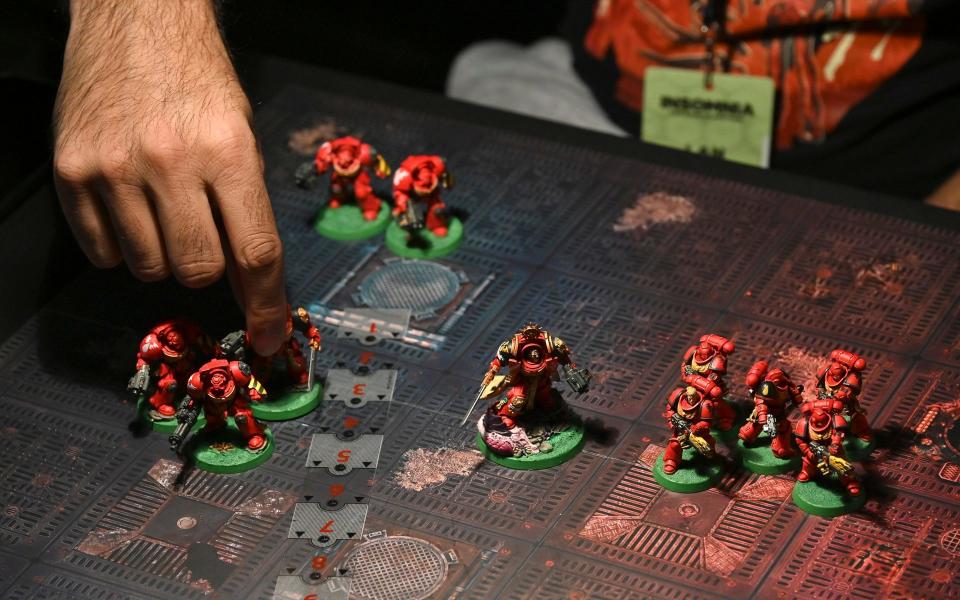
What does his wife think of it? ‘She thinks it’s crazy. She will never understand it, spending months painting a single figure. But she knows it brings me joy.’
Model railways may no longer have the generational allure that they once did – but I think you could make the case that Warhammer serves a similar function (and Games Workshop, which makes all of the Warhammer products, is thriving). ‘The painting is very zen,’ says Chivers. ‘When I’m painting a Warhammer figure, I’m just thinking about that. I’m thinking about the angle of the light and the flow of the paint.’
Scott describes a similar flow state when it comes to Lego: ‘When I’m building a model, I’m just focusing on a task and next thing I know, three or four hours have passed. And I’m like, “Wow! Where did that time go?”’ Which is funny because this is precisely what makes me reluctant to get into something like building Lego, which was my childhood obsession. I’m worried that I would lose hours and hours to it, look up and go: ‘Argh! Where did that time go?’
But perhaps this is simply me conceiving of time in the wrong way – as something to be invested for some future reward, as opposed to something that should be enjoyed for its own sake. This is certainly what Dr Audrey Tang recommends: ‘Day-to-day positive affect – that state of just being, “You know what? I feel good” – is correlated with life satisfaction, it’s correlated with fulfilment, it’s correlated with low-level happiness. To be happy we don’t need to feel joyful all the time. We just need to feel pretty good – and that’s enough.’
Besides which, speak to just about any hobbyist, and they will say that it’s not just about sitting on your own. It’s about the meet-ups, the socials, the lore, the friendships, seeing and being seen. When I ask my dad what he gets out of model railways, he talks me through the various engineering challenges, then says, ‘I hope you mention the social aspect of it.’

During lockdown, I only recently discovered, he organised an online exhibition so that he and some fellow modellers, deprived of the ability to meet up, could display their layouts.
And actually, as it turns out, reports of the demise of model railways may be exaggerated. My dad feels he has noticed less activity in London, where many amateur clubs like his have been priced out, but elsewhere the hobby is thriving, thanks in part to YouTube how-to videos, online forums, and lots of retired people with time on their hands.
He also points me towards a new generation of enthusiasts such as the splendidly named Dawn Quest, a TV producer who has launched a YouTube channel, Model Railway Quest. ‘Once children see the model railways in action, it captures their imagination,’ says Quest. ‘It’s a fantastic hobby for young people. It’s sociable, it’s therapeutic and it teaches them a bunch of skills. I’m not sure who said it, but a model railway layout is like the contents of someone’s mind laid out on a table. It’s about creating a world and having control of it.’
Her most recent layout is a rather stunning example of this. It is a model of the station in Brief Encounter. Only she modelled it in monochrome, just like the film. ‘It taught me a lot about… grey. I thought I’d grow bored of painting just in grey but the opposite was true. I was really sad when I finished.’
Even if my dad is unlikely to use the word ‘therapeutic’, this is more or less his approach to his railway. There, in the shed, is a working model of his own childhood, honed and improved with skills acquired over decades. There are models he made when he was a teenager. There’s a little truck advertising the department store that my grandad used to work in. There is not a single model that he hasn’t modified in some way. It’s a life’s work. Perhaps it is the sentiment of middle age, but I now find it all incredibly moving.
It also gives me pause. Most of our plans aren’t going to come to very much. Why not spend your time doing the thing you authentically love?
